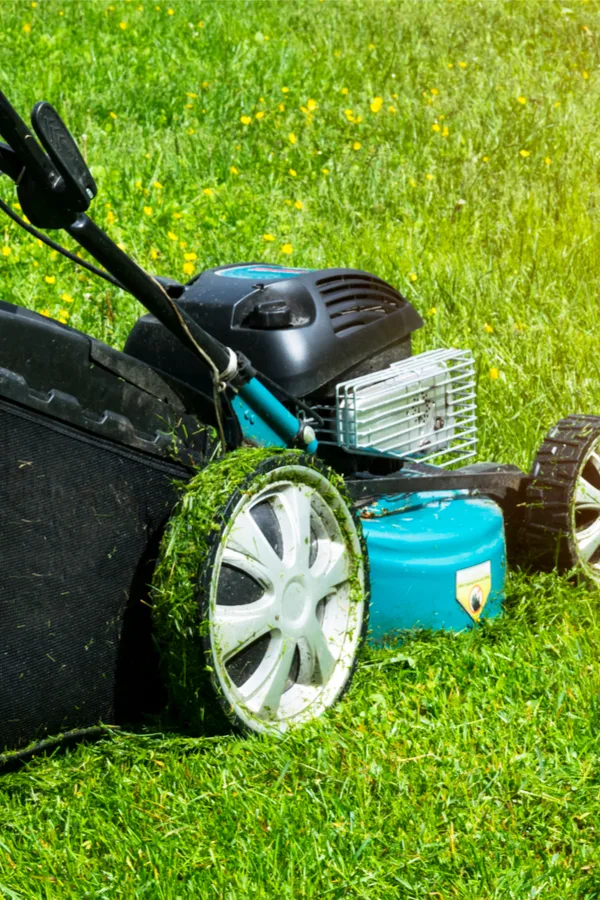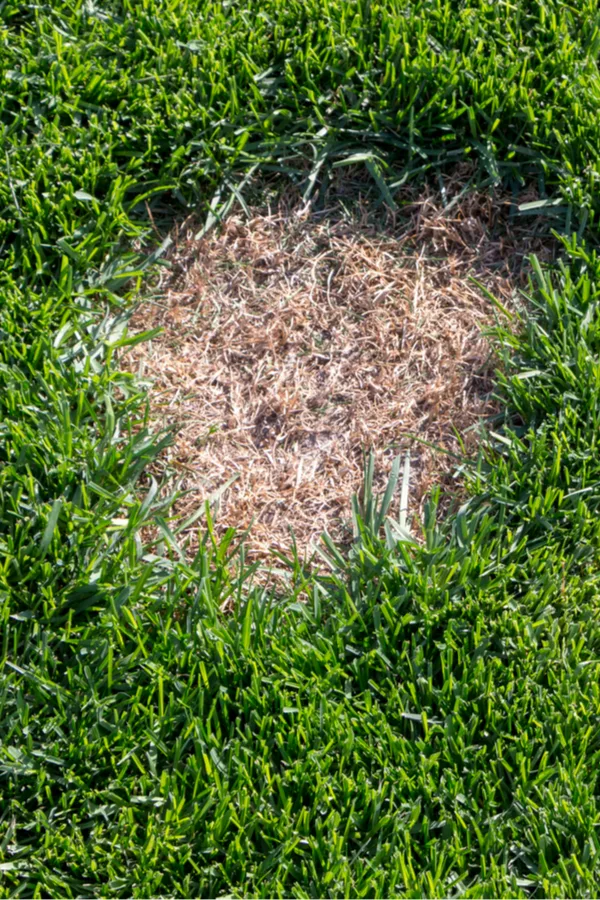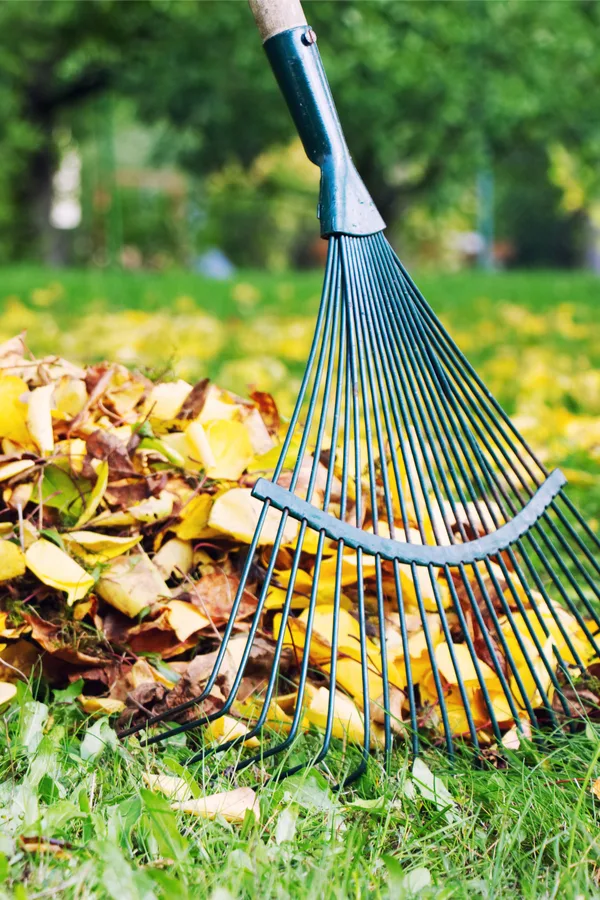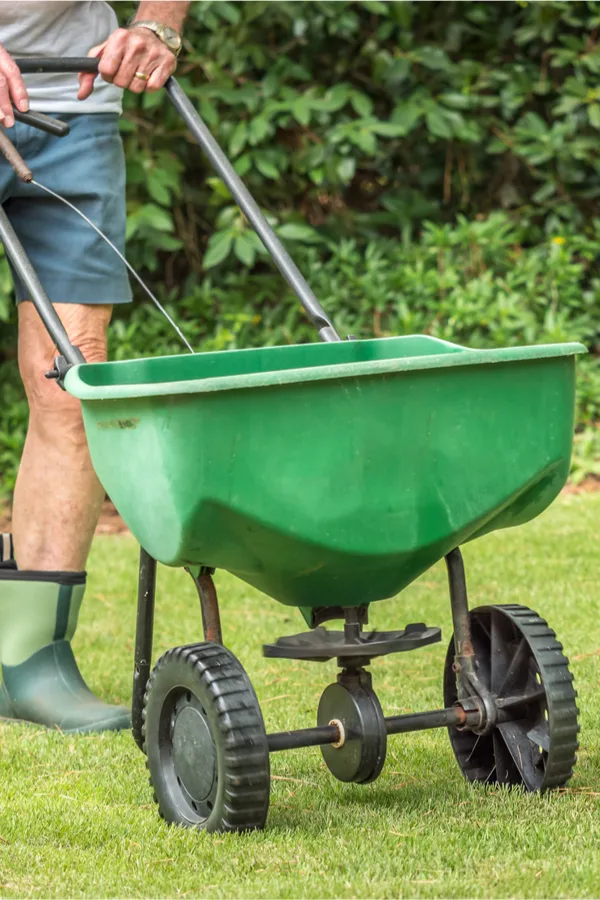When it comes to creating and maintaining a great lawn, a few simple must-do chores this fall can really set the stage for the turf of your dreams next year!
Fall is the perfect time to get your turf looking lush, green and beautiful. The cool autumn weather is ideal for repairing, reconditioning and revitalizing lawns.
Let’s face it, summer is hard on turf. By the time autumn rolls around, many lawns are showing serious signs of stress. Hot temperatures, inadequate rainfall, and the burning rays of the sun all take their toll.
Throw in the stress of foot traffic from cookouts, backyard sports and constant mowing, and it can leave your turf with bare spots, brown patches and more.

But all of that can be erased with a little work this fall. With that in mind, here are 5 great fall lawn tasks that can not only repair and revitalize your grass, but have it growing better than ever next year!
5 Must Do Fall Lawn Chores
#1) Lower That Mower
Cutting your grass lower in mid to late fall is a pivotal key to keeping your lawn healthier. Although cutting the grass higher during the summer is great for conserving moisture, keeping it high in the fall can cause several issues.
For starters, the cooler, more damp conditions of fall make it hard for turf to dry out. This can make it easy for disease and mold to strike. In addition, falling leaves can compound the problem – matting the longer grass and making it hard to mow and maintain.
In the spring and summer, a typical lawn should be mowed at a height of between 3.5 to 4 inches. But in the fall, the mowing length should be lowered to around 2.75 to 3 inches.

This length is high enough to provide protection from weed seeds and heat, but low enough to allow the lawn to dry out faster. That lower lawn is also important through the winter months, when heavy snow can compress lawns that are left too long.
#2) Fix and Repair Bare Spots – 5 Must Do Fall Lawn Chores
Now that you have that lawn lowered a bit, it’s time to take care of any bare spots. Bare spots and damaged turf can leave a yard looking less than desirable by late summer. Making it worse, they are an open invitation for weeds to settle in.
But fall is the ideal time to get all of those empty patches fixed. The cooler weather and dew-filled mornings are a perfect combination to germinate seed.
Start by digging up bare spots and adding in a bit of compost or topsoil to the top few inches of the soil. Remove any dead or damaged turf when doing this. Use a high quality seed, and sow heavily. Rake the seed gently into the soil, and water.

Cover the newly seeded soil with straw or a thin layer of peat. This helps to keep the soil moist, and keep birds and other animals from consuming the seed.
Water every few days until the seed germinates. Once the seeds sprout, continue watering twice a week until fully established. Do not over-water. Too much water will keep the roots at the surface. Deeper roots mean a stronger stand of turf. Do not mow the areas for 4 to 6 weeks to allow the seed to establish.
#3) Keep Leaves From Piling Up – 5 Must Do Fall Lawn Chores
It is important to keep fall’s falling foliage cleaned up so your lawn isn’t suffocating. Leaves, especially ones that become thick and wet, can easily snuff out grass when it piles up.
Rake or vacuum leaves at regular intervals to prevent lawns from getting choked out. And whatever you do, don’t burn or throw those valuable leaves to the curb!
Leaves are a wonderful addition to the compost pile. You can also shred them to use as mulch over the garden, or to protect vulnerable perennials through the winter.

#4) Aerating & Overseeding – 5 Must Do Fall Lawn Chores
Aerating and overseeding are two of the best ways to thicken and protect a lawn. And they are both easy to do!
Aerating is the process of puncturing the soil to create channels down into the soil. These channels then allow air, water, and nutrients find their way to the roots of grass.
There are walk behind units, as well as pull behind aerators for lawn mowers. Most rental stores carry them and the process of aerating usually takes just a few hours for most lawns. (See: How & Why To Aerate Your Lawn)
Once you aerate, it is the perfect time for overseeding your lawn. Overseeding is the process of planting new grass seed into an existing lawn. There is no need to till or remove the existing grass.

Overseeding should occur at least 35 to 45 days before your areas typical first frost. This allows enough time for the seed to germinate and become established. The easiest way for overseeding is to mow the lawn down to 2.5 inches, and then use a drop, broadcast or hand held seeder to spread seed.
You can also use a slit or drill seeder to lightly “plant” the seed in the ground. Slit seeders are usually available for rent at most home and garden tool rental stores. You don’t have to aerate first to overseed, but the channels in the soil make it easy for the grass seed to find a home.
#5) Feed Your Lawn – 5 Must Do Fall Lawn Chores
Finally, Autumn is the perfect time to give your lawn a boost of nutrients. Feeding lawns in early to mid-fall not only greens them up, but allows them to come alive early next spring.
If you are looking for an all-natural solution in place of commercial fertilizers, try using compost. A 1/8″ to 1/4″ thick top dressing of compost in the fall will do the trick. Simply use a drop spreader on a wide open setting to lay down a thin coat.
The compost will settle down in the top layer of soil, feeding as it decomposes. The added benefit of compost fertilizing is that you are adding organic material to your topsoil as well.

Here is to getting your lawn in shape this fall with a few simple chores. It is amazing how a bit of work now can pay big dividends next spring!
Follow Our Facebook Page For Great Gardening Tips And Advice! This Is My Garden Facebook Page
This Is My Garden is a garden website created by gardeners, for gardeners. Jim and Mary Competti have been writing gardening, DIY and recipe articles and books and speaking for over 15 years from their 46 acre Ohio farm. They publish three articles every week, 52 weeks a year. Sign up today to follow via email, or follow along!
